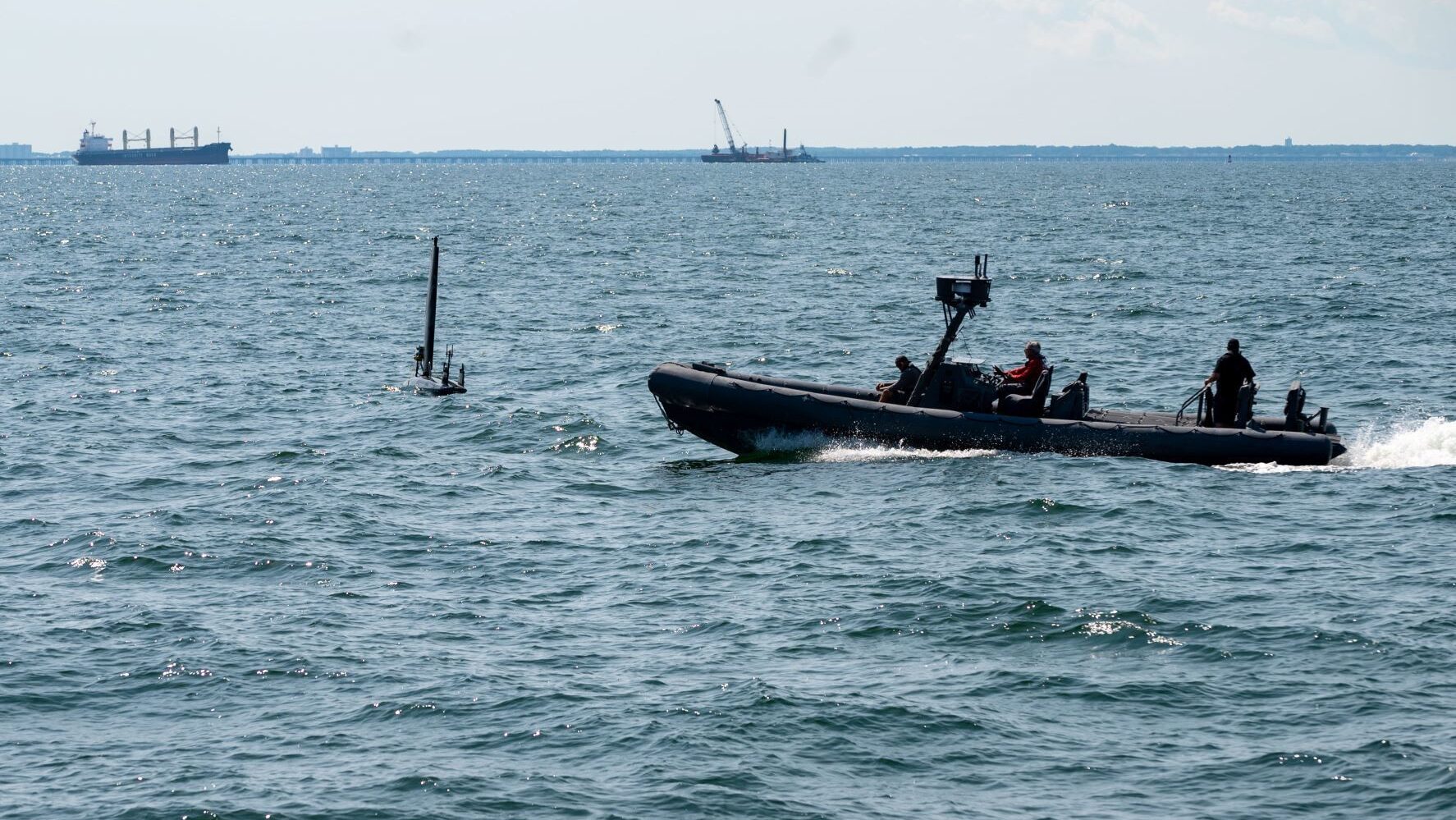
Vessels participate in an ONR SCOUT-sponsored experimentation event off the coast of Virginia Beach, Virginia. The purpose of the event was to increase the range and detection of various unmanned surface vessels. (Photo: ONR SCOUT team)
WASHINGTON — The Pentagon’s research agency known for tapping into Silicon Valley is seeking industry contractors capable of producing small, unmanned surface vehicle “interceptors” at a “high-rate” of production as soon spring of next year — part of the military’s sprawling Replicator effort.
“The Department of the Navy has an operational need for small Unmanned Surface Vehicle (sUSV) interceptors, capable of autonomously transiting hundreds of miles through contested waterspace, loitering in an assigned operating area while monitoring for maritime surface threats, and then sprinting to interdict a noncooperative, maneuvering vessel,” according to the Defense Innovation Unit solicitation published Monday.
“Interceptors will need to operate in cohesive groups and execute complex autonomous behaviors that adapt to the dynamic, evasive movements of the pursued vessel,” the solicitation, known as a commercial solutions opening, continues.
DIU’s request characterizes the potential USV as a “production-ready, inexpensive, maritime expeditionary (PRIME) small unmanned surface vehicle (sUSV) and collaborative intercept capability.”
Although the CSO does not explicitly name Replicator, the expansive initiative spearheaded by Deputy Defense Secretary Kathleen Hicks, a DIU spokeswoman confirmed to Breaking Defense today the solicitation is part of both Replicator as well as a “wider push on autonomy” reflected in several CSOs.
One of the hallmarks of Hicks’ Replicator initiative is the speed at which the Pentagon plans to field large numbers of unmanned systems in as quickly as two years from now. The DIU solicitation states that any USV industry submits should be ready for production of at least 10 or more units per month and roughly 120 or more annually.
“Desired performance characteristics include a range of 500-1,000 nautical miles in moderate sea states while transporting a payload of 1,000 lbs, using diesel fuel,” according to the solicitation. “Vehicles should be able to loiter for several days while maintaining adequate fuel reserve for return transit, and be able to sprint at 35 knots or faster in low sea states when the mission dictates.”
Further, potential industry solutions should be prepared to begin assessments as soon as one month after another transaction agreement is awarded.
The solicitation comes as the Navy’s fleet has been more aggressively pushing to operationalize commercially available unmanned surface vehicles. The most recent of those pushes came from the Bahrain-based US 5th Fleet which recently established Task Group 59.1.
“[While] the intent of Task Force 59 has been to bring new systems, experiment [with] those systems and see the value in them, [bringing] valuable assets to the theater in this region will come under the realm of Task Group 59.1 and we will take them to the operational realm,” Lt. Luis Echeverria, the newly appointed commander of Task Group 59.1, told Breaking Defense in a Jan. 19 interview.
Shipbuilder Austal USA names Michelle Kruger as new president
Kruger had been serving as interim president since former chief Rusty Murdaugh resigned last spring.



























